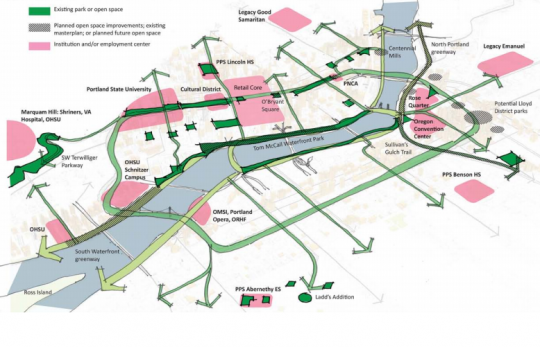
(Image: Portland Bureau of Planning and Sustainability)
The concept of a low-stress bike loop surrounding Portland’s central city will get a high-profile burst of ideas.
The Green Loop, as the concept is known, is supposed to eventually include Tilikum Crossing, the Park Blocks, the Broadway Bridge (including a redeveloped post office site), a new biking-walking bridge across Interstate 84 just south of the Lloyd District and an undetermined route through the Central Eastside Industrial District.
Now, it’s been chosen by the University of Oregon’s John Yeon Center for Architecture and the Landscape and the Portland Bureau of Planning and Sustainability as the subject of a $20,000 design contest that’ll cap Design Week Portland in April.
The challenge is different for people with different specialties. Here are some passages from the contest description:
For architects, urban designers, landscape architects, makers and others interested in designing built pieces, the goal is to create places.
Deliverables should explore a single or multiple sites along the loop. Your submission should propose specific art, furniture, signage, and other ingredients that will create dynamic public space—fast.
For communication designers and strategists, the goal is to build an identity for implementing the green loop.
Deliverables should excite the public about the overall concept . A logo is not the desired outcome. Rather, your submission should propose an approach for communicating the opportunities of the loop.
The contest also invites people to “make a place that exemplifies a strategy” or to “design a strategy and make an example.”
Advertisement
The Green Loop is an interesting beast. (Here’s our coverage.) It emerged from the city’s Bureau of Planning and Sustainability, not the Bureau of Transportation, Parks Bureau or Portland Development Commission, one or all of which would presumably pay for it. From what we can tell, biking advocates both inside and outside city government are divided on the concept.
In a recent interview, Bicycle Transportation Alliance Executive Director Rob Sadowsky used the Green Loop as an example of bike infrastructure he felt is hard to justify because it would seem to benefit richer people. The BTA hosted a ride on New Year’s Day that highlighted a similar concept taking shape in east Portland known as The Green Ring, which supporters say would make an “active transportation beltway” around Lents Town Center by connecting neighborhood streets with the Springwater path and other bikeways and walkways.
(Update: Sadowsky added more thoughts in an email Wednesday: “What I believe that I’ve said consistently about the Green Loop is not that it is not a good project and that it would only benefit rich people, but that if we are going to hold up a wonderful project to go after in downtown, then we should either simultaneously support the Green Ring in Lents or start with that one. But by focusing on this downtown project (and give it the incentives like a $20,000 award) and not do that in East Portland perpetuates inequities rather than builds equity.”)
We think Portland should have lots of green loops and rings. When it comes to the official Green Loop that’s gaining steam in the central city, no one would doubt that there are more people biking there than through any other part of the city.
The contest focuses specifically on five locations that could definitely be much more pleasant than they currently are:
That’s the Park Blocks crossing of Burnside, the east landing of the Broadway Bridge, the wide intersection of Sandy and 7th, the 8th Avenue crossing of the Orange Line and the hillside between SW Harbor Drive and Naito Parkway, across Harbor from the new Orange Line viaduct.
There’s a lot of potential here. What do you think is possible?
Or, to solve a problem that Portland seems to have more frequently: What ideas do you have for helping your city accomplish the possible?
Proposals are due Feb. 29, but people who plan to submit must register by Jan. 22. Students can apply for free; professional firms must pay $50 to $100 depending on size. The winner will be chosen by a jury of “three nationally known designers” who “will join local stakeholders.”
— Michael Andersen, (503) 333-7824 – michael@bikeportland.org



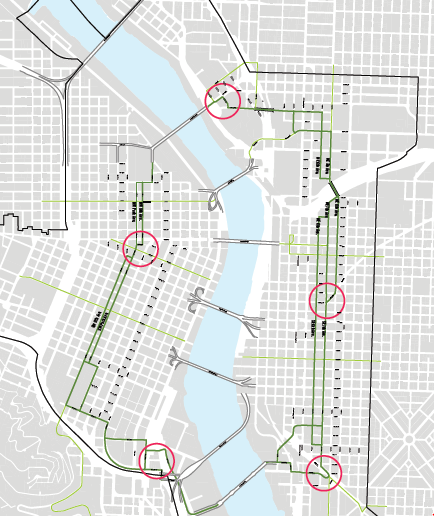
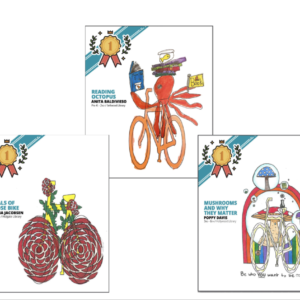
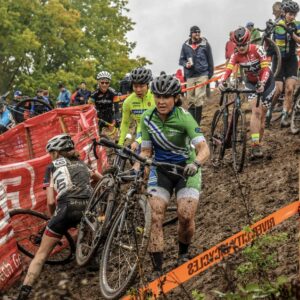
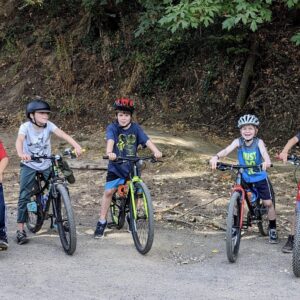
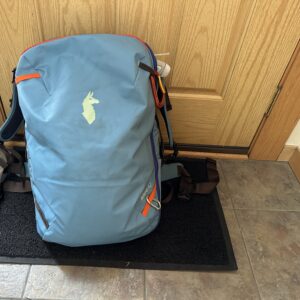
Thanks for reading.
BikePortland has served this community with independent community journalism since 2005. We rely on subscriptions from readers like you to survive. Your financial support is vital in keeping this valuable resource alive and well.
Please subscribe today to strengthen and expand our work.
A cap over I-405 is needed first.
The green loop really should go along 11th & 12th (nice houses, trees, restaurants, closer to the residential areas), and trucks and other heavy vehicles should be rerouted to 7th (closer to the industrial area), easy access to Grand, MLK, I-84, and I-5 northbound.
Protected bike lanes on 11th and 12th would be transformative! Currently, they just serve as car sewers and thus are very dangerous to ride in and not so pleasant to walk along either. However, the couplet offers a more challenging connection to the north and south, so maybe they should be a separate project?
The south is easy; riders can use the swing-gates (or even ride in the street!) to access the Orange Line trails. The north is a little more complex, but I would at some point swing towards the river to cross Burnside at one of the signalized intersections, and avoid the mess at Sandy.
It’s great that the city is utilizing our swarth of talented engineers and designers for this project! Our wide range of talented and passionately-engaged citizenry is our greatest asset.
Any design should include separated and protected bike lanes, obviously, but I’d like to see the city consider closing some streets to cars entirely. The Park Blocks would be easy: use the current road (which mostly serves as a parking lot anyway) for bikes and keep the center path for people walking. The streets next to the Park Blocks are very dangerous to ride in since the entire riding area is within a door zone due to the street’s narrow width and allowed parking on both sides.
On the other side of the river 8th Avenue is an obvious choice for separated infrastructure. It would connect the Orange Line MUP to the planned Lloyd District/Banfield bike bridge. 8th is a very wide street when it’s not fully parked up, so despite it’s already low traffic, it can create an unsafe-feeling ride since it enables people to drive too fast. I’d recommend removing all parking along the road, widening the sidewalks, and creating green bike lanes coupled with diverters for drivers every few blocks. This may be problematic due to truck traffic, however, it’s not impossible to find solutions to this problem.
I think SE 6th is the best eastside n/s route. With some diversion and removal of on-street parking, 6th Ave would be a very pleasant route with good access to the bridges and easy connections to commercial/residential on 7th and Grand/MLK. Maybe 6th could become one way for motorists/2-way for bikes, the the one way could alternate north, then south every 4 or 5 blocks.
Agreed that 6th is a good choice through CEID. It is a street that is really not needed for cars and trucks. I would vote for no big vehicles allowed, besides local access.
This “contest” is bizarre.
People and firms that want to “enter” have to PAY to submit their proposal (except for students who may submit for free). The “prize” is $20k, but it is to be used for further work by the winner. Twenty thousand dollars doesn’t go very far when it comes to providing professional services so the “winner” will end up losing even more money to “further develop the plan.”
Be careful about making too many suggestions on this forum; you may get a bill.
I’ll be funding my entry with funds I’m getting from a Nigerian prince who wants me to help him invest his wealth in the US. What a sucker!
It’s pretty common for design competitions to have entry fees. Most likely the fees are going towards the cost of administering the competition and/or the cost of putting on the Design Week Portland festival.
Also it keeps them from being flooded with spam/trolls
J_R
There are many competitions available to designers and students in this format. The only thing bizarre about it is that we haven’t done this sooner. The student has an amazing opportunity to get their name out into the design community, if they win, and the firms have an opportunity to get a bid with the city to actually build the infrastructure for this to work. Not sure where your “information” is coming from.
Let’s provide plenty of spaces on this loop to provide room for homeless camp/trash dump/bike chop shops.
I’m considering entering this thing. I’m just a guy with some ideas, some time, and a reasonable design background. Let me know if you’d like to work on it together.
When this “green loop” is routed through existing parks and greenspaces care should be taken in the verbiage used to describe it.
“Bike Highway” or anything to that can be misinterpreted to mean that bicycle riders can ride through historically pre-existing pedestrian spaces any faster than a walking pace is doomed to be fuel for the “crazy dangerous cyclists” rhetoric. Someone will get injured or killed and it will very likely be the fault of the high velocity road legal vehicle operator: a bicycle rider.
I feel that BikePortland.org as a community has matured enough to admit that while this Green Loop should be open to bicycle riders it most definitely should be designed/engineered to strongly discourage riding a bicycle faster than jogging speeds of around 5~8mph. Chicanes? Rough path wide segments of cobblestones with smooth wheelchair corridors painted vivid and SLIPPERY handicapped blue?
Far too much of this proposed loop is already pedestrian space. Angering the general public with close calls won’t help bikes.
Also: I suspect that the best way forward to help bicycle design causes at this point in Portland might be to focus on being a pedestrian paradise. It is the one thing that the “strong and fearless” has in common with the “no way, no how” and everyone in between: eventually everyone is a pedestrian.
If an area feels safe enough to walk without fear to the fearful they are much more likely to consider a bicycle as safe too.
Design for walking and bicycling will follow.
Yes, this is what I was trying to get at in my comment below: a green loop isn’t necessarily going to improve things for everyday/commuting cyclists, but might be better for recreational cyclists, kids, etc. Is that more important than infrastructure in east Portland?
I understand why the BTA lacks enthusiasm, especially given their new equity policy.
Their lack of enthusiasm disturbs me.
I’d counter that any improvements that only directly increase pedestrian use, happiness and a sense of safety also indirectly influences public opinion that all non-automotive activities are safe (including bicycles) and that once a person gets enamored of a walking lifestyle the barrier to entry to bicycle use is much thinner.
Get people out of their cars by any means necessary BTA: the view of bikes from a car is far more negative than on foot. Sometimes you have to prepare your garden before you plant your seeds of bike-iness so that they will grow strong and tall.
I love this idea in theory, but I’m concerned that this loop could end up more like Waterfront Park and Eastbank Esplanade, which are suited for walkers and joggers and pretty slow cyclists rather than commuters. We really need better bike infrastructure to get from the Broadway Bridge to and from Portland State… if a green loop is filled with wandering tourists, that doesn’t help commuters — but it could make it more difficult to get the infrastructure we do need.
If this does happen, I’d like to see the loop have a northern extension, perhaps to Irving Park and over and down to Vancouver. Irving Park is lovely, and that’d loop a few more neighborhoods.
I’m feeling cynical but could be convinced otherwise.
I think the green loop is best thought of as an urban design strategy, a way of using place-making strategies to change our streets into different sorts of places, and knit different neighborhoods together. For instance, fixing the gap in the park blocks, and making this a place more people want to go (regardless of mode) would be a huge improvement of this potentially amazing piece of infrastructure (the Park Blocks). If this is considered a piece of street infrastructure, primarily used to move bikes quickly through these area,I would consider that a failure. IMO, the Green Loop should seek to build on and expand the success of the Park Block by making a series of comfortable place to be in dowtown and Central Eastside with very comfortable, casual connections between them for all people, including (but not prioritizing) people on bikes. This should be distinctly different from the Springwater which is supposed to be a park, buts designed to be a mini freeway resulting in lots of conflicts between people who want to stroll in a park and commuters. I hope the Green Loop uses strong design language to de-emphasize speed (and largely exclude cars!) BTW, IT was quite recent that on-street parking adjacent tot he Park Blocks was added; reversing that horrible decision seems like a reasonable first step!
Disappointed in the BTA’s lack of enthusiasm. Downtown has very little in terms of bike infrastructure. Downtown also has the highest number of low income residents in the city in terms of homelessness and also students.
The Green Loop in a great opportunity to improve bicycling for a great number of Portlanders of all incomes. I hope it happens.
I should add that I’m personally disappointed in my own failure to cover the Green Ring, so far. I’ll get on that.
I was really shocked and surprised by that comment too. I don’t recall the BTA making similar comments about the 20s bikeway, which serves such impoverished neighborhoods as Eastmoreland, Hosford Abernethy, Sunnyside, Grant Park and Alameda. (To be clear: I don’t think that’s a good argument not to build the 20s bikeway, but if we were only ever going to build bike infrastructure in the lowest income parts of the city Inner SE is not where we would be investing).
Every census tract in the Central City has a median income that is lower than the City average, with the exception of track 59 (which includes South Waterfront) and tract 50 (which includes the western half of the Pearl). This is in part due tot the fact that there is a large amount of affordable housing located in the Central City, with more planned and under construction right now. The Central City is also the major employment, education and cultural center for the region. Sure, there are a lot of high income jobs in Downtown. There’s also a low of income ones. As has been pointed out during the recent debate over parking rates in Downtown, most of those workers arrive means other than driving alone.
Even still, maybe it would be a valid point if Downtown already had a lot of great bike infrastructure. It doesn’t. One of the major failings of the bike network in the Central City is that there isn’t a single northbound bike facility through downtown. Hopefully the Green Loop will hopefully address this, and the BTA will choose to support it rather than attack it.
If this would get built, something really good from a cycle-path (not bike line/bike boulevard perspective) type network like this, it’d actually break me out of my depressed cycling/infrastructure funk that I’ve been in now for a few months.
If any designers out there would like to work with us to make the green loop more skateboard friendly please contact me. You can keep the prize money, for us the prize is a skate friendly downtown!
How about removing Sandy between 7th and 12th? It already transitions to the regular grid at 14th.
So we are encouraging new, unreasoned riders to use my two least favorite bridges to cross?
How can the loop considered “green when it’s aligned with and adjacent to sections of freeways that are known to be the most polluting in Oregon?
Portland Architecture has a good interview with Randy Gragg about the Green Loop design competition:
http://chatterbox.typepad.com/portlandarchitecture/2016/01/randy-gragg-discusses-uos-green-loop-design-competition-.html
What about the 40 Mile Loop around Portland (actually 100+ miles, including the Springwater Trail on its south side)? Still a lot of gaps to close, but it could have potential as jumping-off points for long distance travel from Portland to elsewhere in the state and hopefully beyond. I like the idea of closing SW Park Av to cars. Remember, that was supposed to be part of the Park Blocks originally. A downtown loop for both peds and bikes would be great. Creating similiar loops in other parts of town would make sense, too. Extending the Springwater to Banks and the BVT and Salmonberry routes should be a must.
We need a green grid, not just some recreational loop. If you build a connected off-street route, commuters will use it at speed. Maybe it’s the right first step toward a green grid given the general reluctance to bike in traffic, but it won’t be all smiles and puppies (there will be many puppies in the way.)